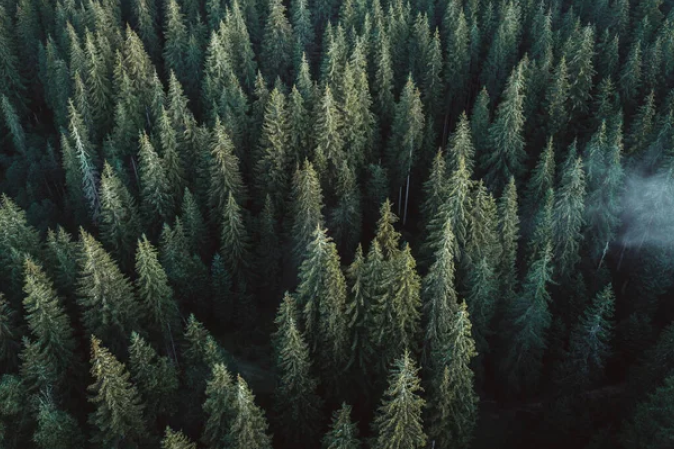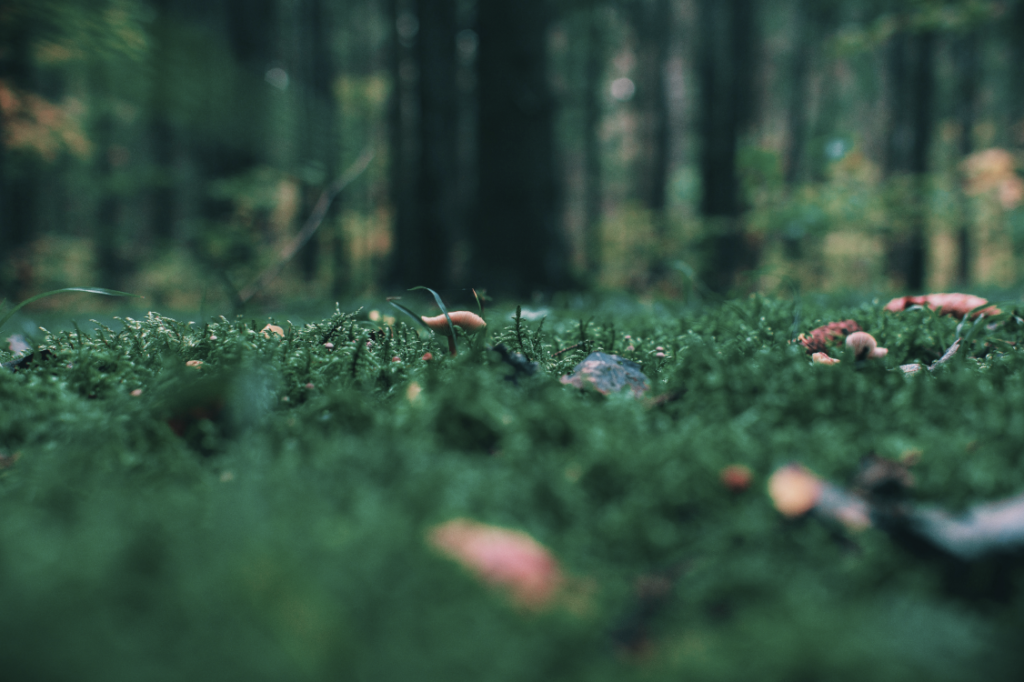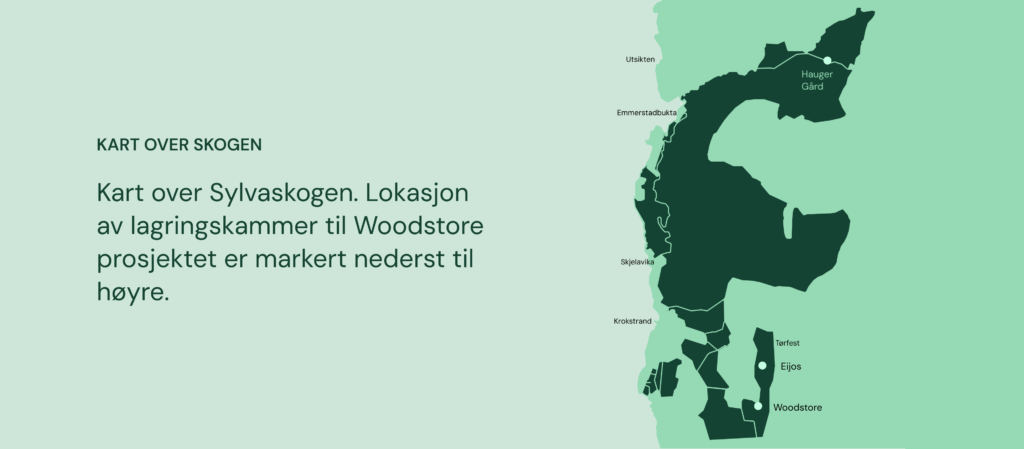THE SYLVA FOREST
A Norwegian forest with great potential


About the forest
Sylvaskogen is about 3,000 decares of forest owned by Sylva at Hauger and Tørfest in Vestby municipality. The first forest parcels were purchased in 2019. In 2024, the area was significantly expanded with the acquisition of Hauger Farm. The forest consists of many different tree species of varying ages, providing a solid foundation for research, piloting, and initial scaling of the Woodstore and Production and Natural Forest concepts.
The management of the forest will serve as a showcase for Sylva’s methods. The natural forest will teem with biodiversity and life, while the production forest will proudly demonstrate biomass production several times higher than comparable forests managed according to current standard practices. It will take several decades before these changes fully materialize, but year by year, we will witness a gradual positive transformation. We hope that even more people will come to enjoy the wonderful recreational area that the Sylva Forest is.
REWILDING IN THE NATURAL FOREST
Rewilding is about helping nature return to its original state.
The natural forest in the Sylva forest varies greatly in quality. Much of it consists of old forest that will remain untouched. The rest is biologically poor, previously clear-cut production forest. Here, together with the Norwegian Society for the Conservation of Nature, the local hiking association, and other volunteers, we will carry out a wide range of rewilding initiatives in the years to come. The goal is to accelerate the forest’s development into a more species-rich and diverse ecosystem, making it more robust and resilient, while also providing richer nature experiences for people.
We have only just begun to explore this, but we have already identified several actions we want to take. Get in touch if you would like to get involved.
Diversity of Trees
Former production forest (which will now be turned into natural forest) consists mostly of spruce. We will increase diversity by removing much of the spruce (as well as invasive species such as red elderberry) in favour of pine and deciduous trees. We will especially promote oak by collecting acorns from local trees and planting them.. Oak trees occur naturally in the Sylva Forest, are well adapted to the local climate, and provide habitat for a wide range of species, from insects to birds and mammals. The acorns will be collected from trees with desirable traits, such as straight growth (mast oaks), strong vitality, and edible nuts. We will seek assistance from specialized experts to support this work.
Restoration of Trout Streams
The property contains two sea trout streams, Emmerstadbekken and Mølenbekken. In 2024, the company Bekkesus AS conducted hydromorphological assessments and proposed restoration measures for both streams on behalf of Akershus County. The condition of Emmerstadbekken is moderate, while Mølenbekken is in very poor condition. We look forward to contributing to the restoration of these trout streams, which includes cleanup, facilitating natural water flow, and adding gravel and stones to create optimal conditions for spawning. Healthy aquatic ecosystems not only support greater biodiversity but also improve water quality in the surrounding area.
Bird Boxes
Thanks to all the bird boxes installed by Arnkjell Johansen, we now have, for example, three breeding pairs of tawny owls. Together with Arnkjell and other enthusiasts, we aim to create even better conditions for more diverse birdlife in the Sylva Forest. You can read more about Arnkjell below.
Big Game Species
Among the large species, there are roe deer, moose, and some presence of red deer. The moose is struggling somewhat due to climate change, while the red deer is gradually moving in. We hope to eventually help improve the living conditions for the king of the forest in the Sylva Forest.

